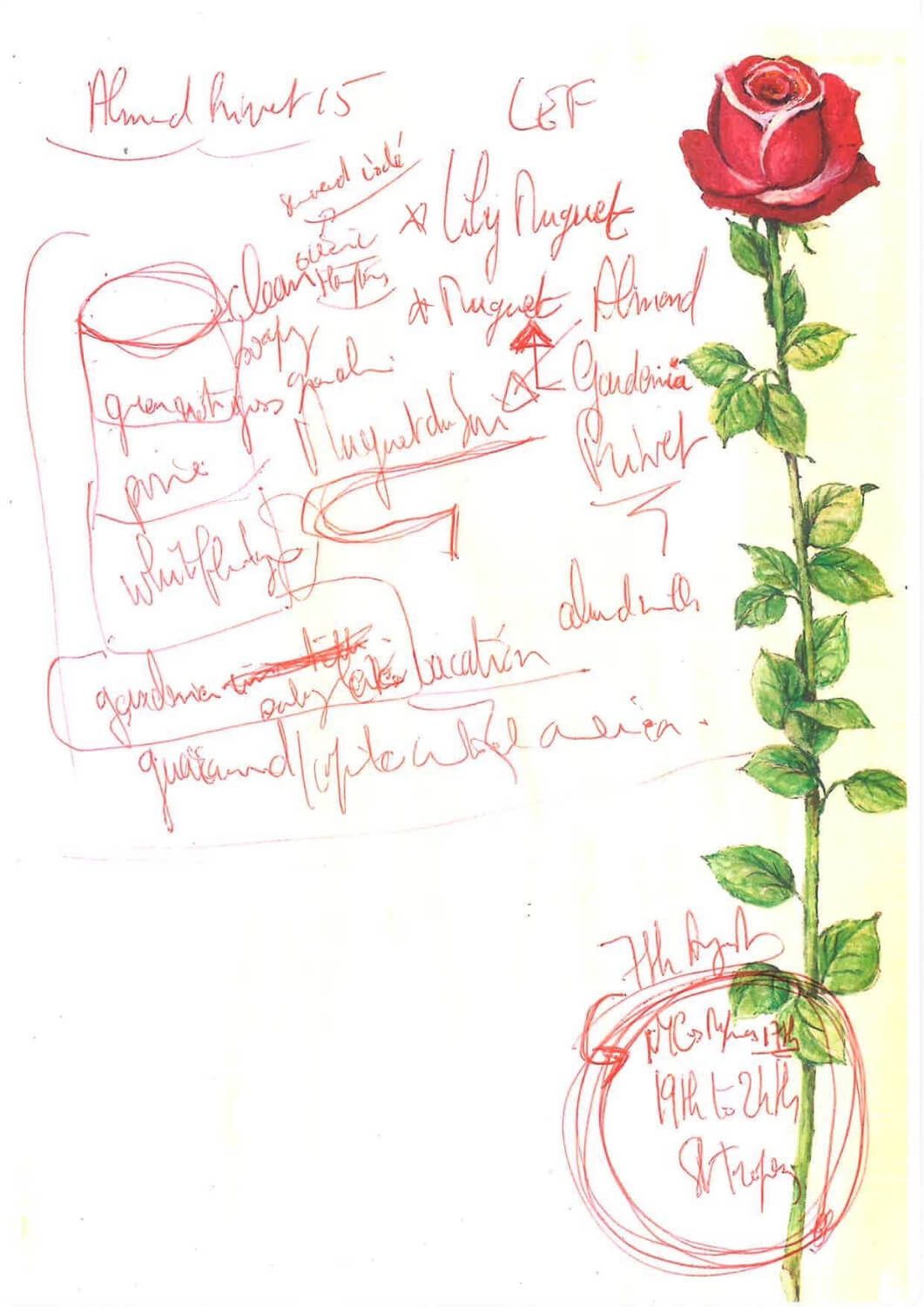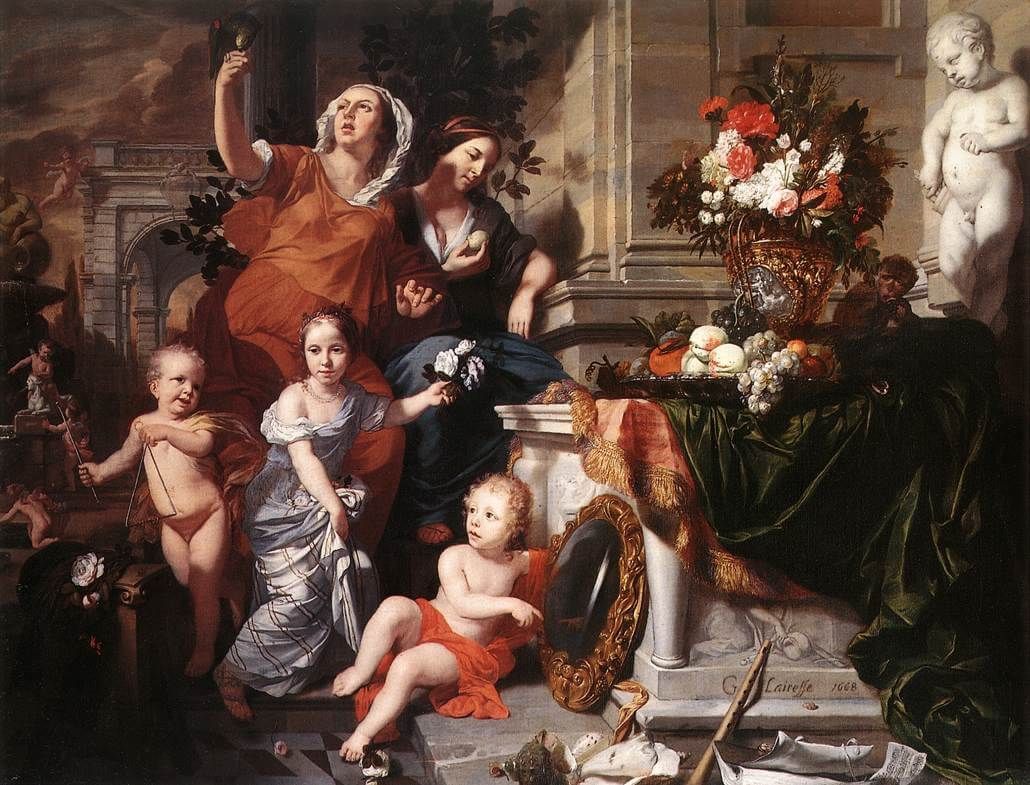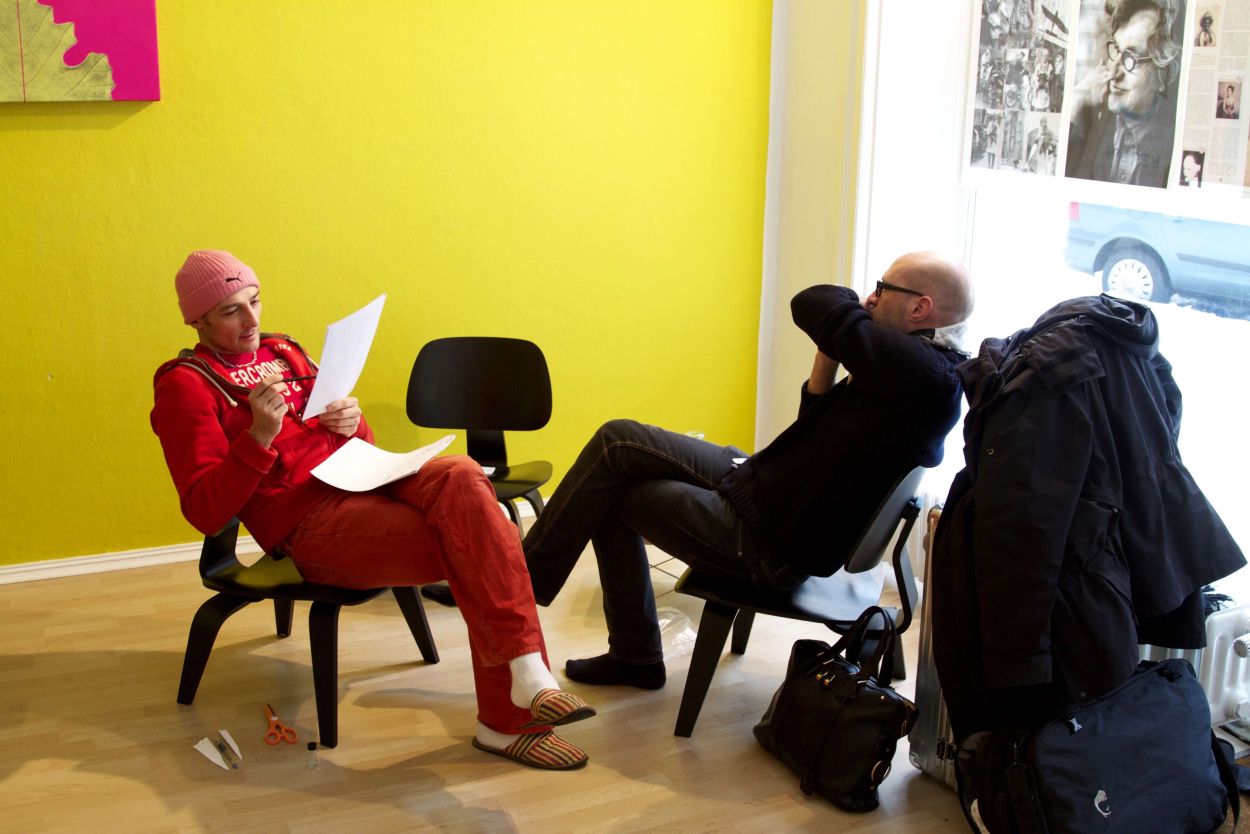No one can smell pepper1:21
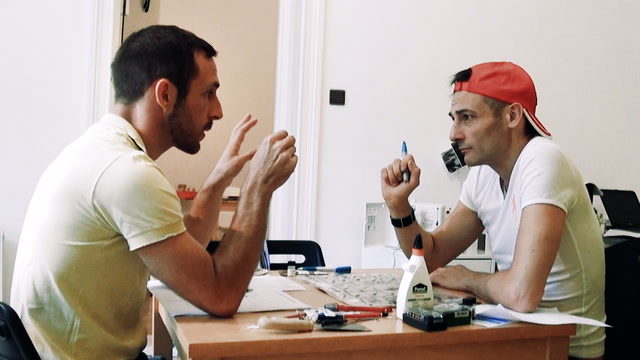
No one can smell pepper1:21
Modification by modification Christophe seeks a numerical feedback on digital scent technology project.
In an increasingly digital world the proximate senses of smell, touch and taste stand out. One cannot capture a smell and send it like a photo via email or other digital communication service. At least not yet. Nevertheless digital scent technology is a vibrant field attracting smart minds all over the world. As a perfumer, Christophe Laudamiel has been involved with some cutting edge projects from the very beginning.
During our observations Christophe developed some realistic scents (e.g. pepper, croissant; French bread etc.) that could work with some innovative digital scent transmission applications. In fact, it was a surprise to see how much the technology of the application can be a challenge to the design of a fragrance. Thus, the choice of a raisin as a carrier material can have a huge impact on the formula. In this case the evaluation followed a more systematic procedure as this clip shows: How precisely does this modification capture the desired scent? In other words: Is this really pepper? And how strong is the scent within the application? In other words: How strong is the pepper? Modification by modification Christophe Laudamiel seeks Christoph Hornetz’s numerical feedback on both questions.
What’s missing on the pizza?2:09
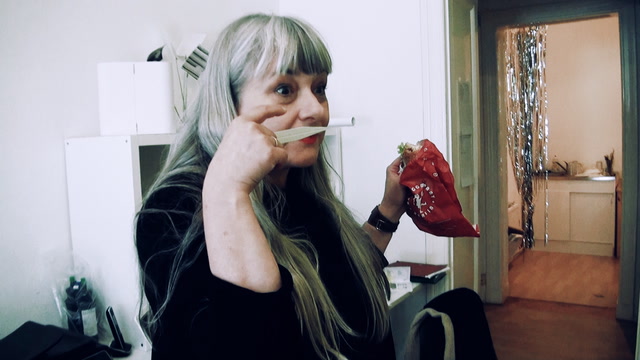
What’s missing on the pizza?2:09
«Imagine working in an open space while a neighboring workmate eats pizza!»
This was the experience we asked Christophe to capture with a scent. The pizza scent was later used in an exploratory study on the role of the sense of smell in the workplace. We knew that odors we encounter in everyday life are complex mixtures of different notes. Nevertheless, a few characteristic molecules are usually sufficient to evoke the generic smell substances, like coffee or chocolate. However, a generic smell can hardly capture a specific experience or workplace situation. In this session with Christophe, the assistant perfumer Ugo Charron and the scent journalist Denise Beaulieu we learn about the olfactory lifecycle of pizza.
Facing A Brainiac2:14
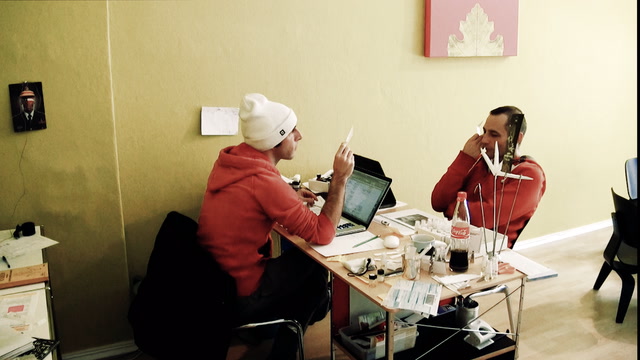
Facing A Brainiac2:14
A good briefing inspires and ignites a perfumer.
The development process for a new perfume involves coordination across various design disciplines: The creative director is not only responsible for the perfume’s name and theme. He is also in charge of preparing the perfume concept (or «brief») and coordinating the overall product fabrication. The photographer shoots the campaign photography. Packaging designers create the bottle, cap and box that will eventually house the perfume when it is finally displayed on the department store shelf. A writer composes press releases and other texts used to market the perfume. Finally, there are the perfumers who develop the fragrance. An additional challenge is that the above designers are often geographically dispersed throughout the world. How is organizing accomplished in such a context that requires coordination among all the designers? How come it does not impede their creative freedom?
In this case the independent designers and their sub-products are coordinated by means of a visual concept which consists of three collages, known as a «mood board.» A mood board is an aesthetic device that connects senses and emotion. It is able to encourage multiple conceptual interpretations while also having a directing and aligning effect. But do the perfumers really care about the concept? For Christophe it is clear that the concept goes beyond the technical brief that dictates raw materials and identifies a target consumer. The concept challenges the perfumer’s creativity. This clip reveals the perfumer’s personal attachment to the concept and its performative qualities: «It is a brainiac».
Wet dog: Chasing the villain5:52

Wet dog: Chasing the villain5:52
This clip features a puzzling mystery Christophe encounters when developing a new scent for Strangelove NYC
In most cases, a perfume is meant to be a pleasurable odor. Technically, it is a mixture of essential oils, aroma compounds, and solvents used to provide an agreeable scent. Yet, the process is more complex than often explained. A useful fragrant ingredient might turn out to be an objectionable odor in a specific combination or concentration: Skatole (from the Greek root skato – meaning «dung») for example, is an indole with a strong fecal odor at high concentrations, but it is often used in perfumery at a much lower concentration where it has a pleasing floral scent. Following the development of a jewel-like fragrance we witnessed how Christophe Laudamiel and Christoph Hornetz suddenly discovered an unpleasant facet, an annoying animalic note. Laudamiel calls it a «wet dog» that only appears after some delay. The two perfumers are puzzled. The phenomenon seems to be really special, if also undesired. They investigate the composition, ingredient by ingredient. In the end, the detective search for malodor delivered a suspect for which Christoph Hornetz had noticed the same unexpected effect in other previous instances: Natactone®. The odor of this chemical compound is often described as «tropical coconut, tonka bean and tobacco». Thus, this clip tells the detective story of a puzzling mystery.
(De)briefing a scent2:36
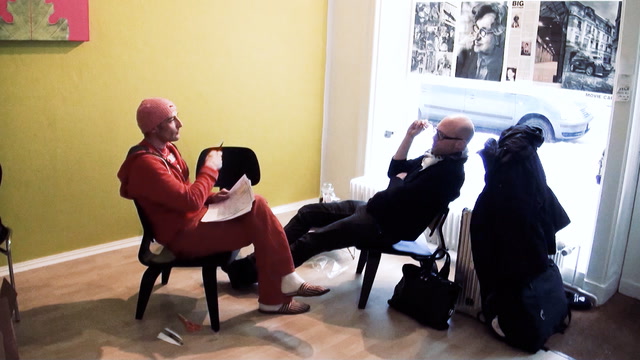
(De)briefing a scent2:36
What is challenging about talking about scents? Can scents have structure? How many dimensions does a scent have?
A meeting with Sebastian Fischenich, the creative director of Humiecki & Graef, provides an opportunity to reflect on the state of the project. The perfumer presents alternative modifications and clarifies next steps with the creative director. In this case the two evaluate alternative scent «structures,» an initially surprising metaphor used to capture the fleeting nature of the olfactory experience.
Family dispute3:18

Family dispute3:18
This video empowers consumers to challenge the salesperson upon their next trip to a perfume store!
At most perfume stores it is common to classify scents by olfactory families. For instance, a department store perfume salesperson identifies the consumer’s passion for a flowery or spicy note and provides more samples from these olfactory families. In encounters such as this, a consumer might easily feel inferior to the salesperson’s expertise. However, in observing the perfume field, we have noticed that even among experts there are highly personal systems of classification that vary from perfumer to perfumer. We asked Christophe Laudamiel and Christoph Hornetz for a set of sample olfactory materials that could help us to better understand some of the everyday practices in the field. One of the perfumers came up with a list of materials grouped by families. One night, we discussed the list over wine and cheese with the two perfumers. On this occasion we learned how even two perfumers who had closely collaborated for several years can quickly disagree about commonly shared olfactory conventions and classifications. Bear in mind that the perfumers talk about single molecules whereas commercial perfumes are composed of several dozen different molecules. After watching the video the viewer should feel empowered to challenge the salesperson upon their next trip to a perfume store!
Evaluative moments2:33

Evaluative moments2:33
Three professionals engage in smelling and discussing an advanced modification of Meltmyheart, a fragrance by StrangeLove NYC.
We see how Christophe Laudamiel, Christoph Hornetz and the flavorist Marlene Staiger spontaneously share their impressions and associations. Apparently, there is no one way of evaluating a scent. A closer look reveals how micro-practices of smelling and using blotters can differ. Christophe is particularly interested how the other two experience a certain effect that he describes as «hot metal effect». The subtitles show how the three professionals cannot agree on what the dominant note of this scent smells like: caramel, coconut and hot metal stand next to each other. A shared interpretation of what they are actually smelling seems to be rather unimportant. Yet, something is achieved in this communication. It is neither explicit agreement nor disagreement. Instead it is the affective experience the three professionals express and collectively interpret as «good». And it is this affective experience that might be key to understanding how organizing is accomplished in a creative context. Is it possible that affects really constitute an organization?
Sketching a scent2:19
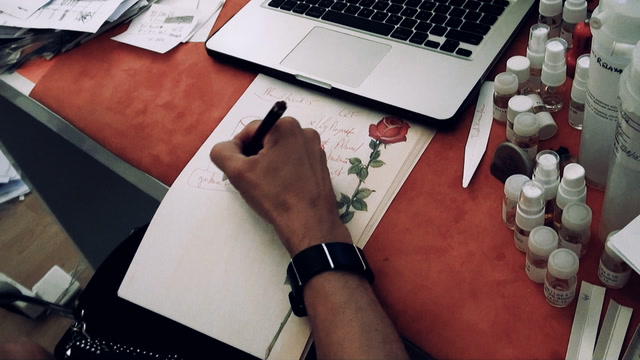
Sketching a scent2:19
The ephemeral materiality of scent eludes the common conventions of visualizing.
Instead, the qualities inherent to the sense of smell remind us of the limitations of our visual culture: But can scents be rendered visual? Pyramids are widely used forms of visual representation when developing or discussing a fragrance. This clip documents Christophe speaking to a client over the phone. Actually, it is a briefing for a new candle scent. After listening to the client Christophe outlines his ideas. Interestingly, he continuously visualizes his ideas: A scent is drawn. Is this merely an illustration? We doubt it. Since the days of the historical Bauhaus vision has been recognized as a «cognitive power in its own right». The ongoing discourse on visual culture reflects on the visual dimension and its implications for society, culture and business. Thus, the agency of sketches and even the seemingly most banal visual artefacts is increasingly acknowledged. There is more than meets the eye.
Beyond words1:43
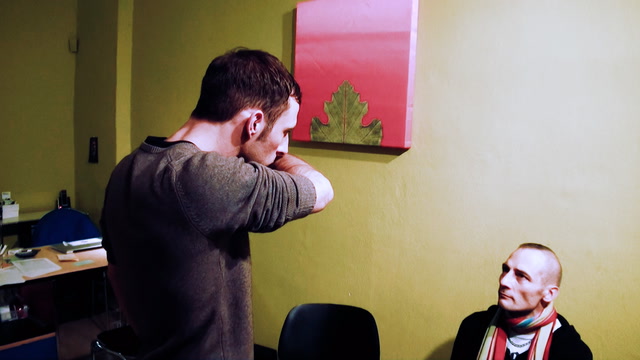
Beyond words1:43
Bodily ways of knowing help Christophe go beyond the limitations of an individual creator.
Christophe Laudamiel once described a perfumer as someone «who masters the behaviour and the perception of volatile molecules by the nose and the brain». Accordingly, a perfumer definitely knows how to create a perfume. Yet, this clip reveals the limitations of an individual creator. Practices of collective smelling and sense-making are needed to challenge and confirm the creative path. In this respect a scent development project serves as an extreme case: Verbal utterances account only for a small fraction of human communication. In addition, body language & posture, silence, gestures and face grimaces function as nonverbal feedback. At first sight, this clip might seem boring because there is not very much happening. At a deeper level however, one can notice the deep uncertainties a creator bears. Experiencing scents, sensing, and sense-making emerge mutually in active and reflective practices that have to cope with the paucity of language to describe scents and engage with bodily ways of knowing.
Key quotes with this tag
Images with this tag
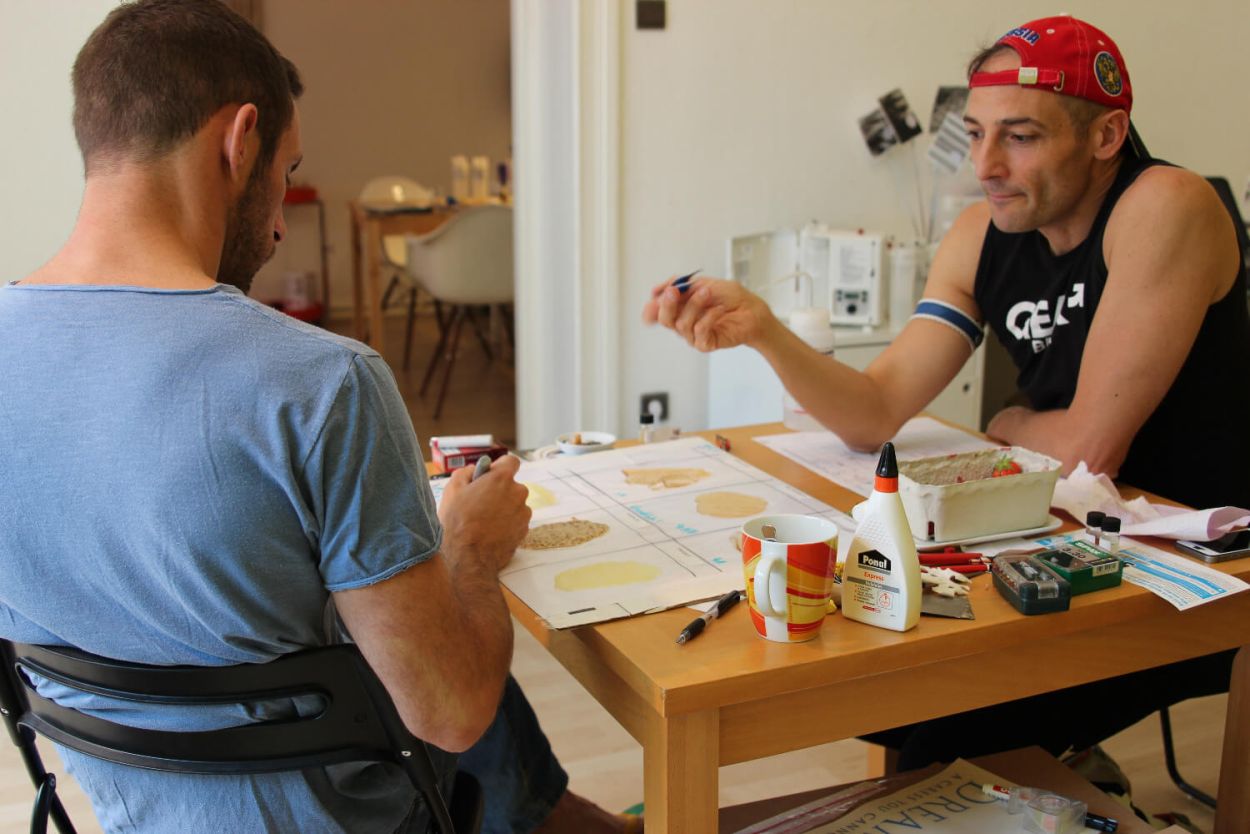
Courtesy of scentculture.tube
Christoph Hornetz & Christophe Laudamiel evaluating combinations of different scents and different resins (e.g. when trying to smell pepper).
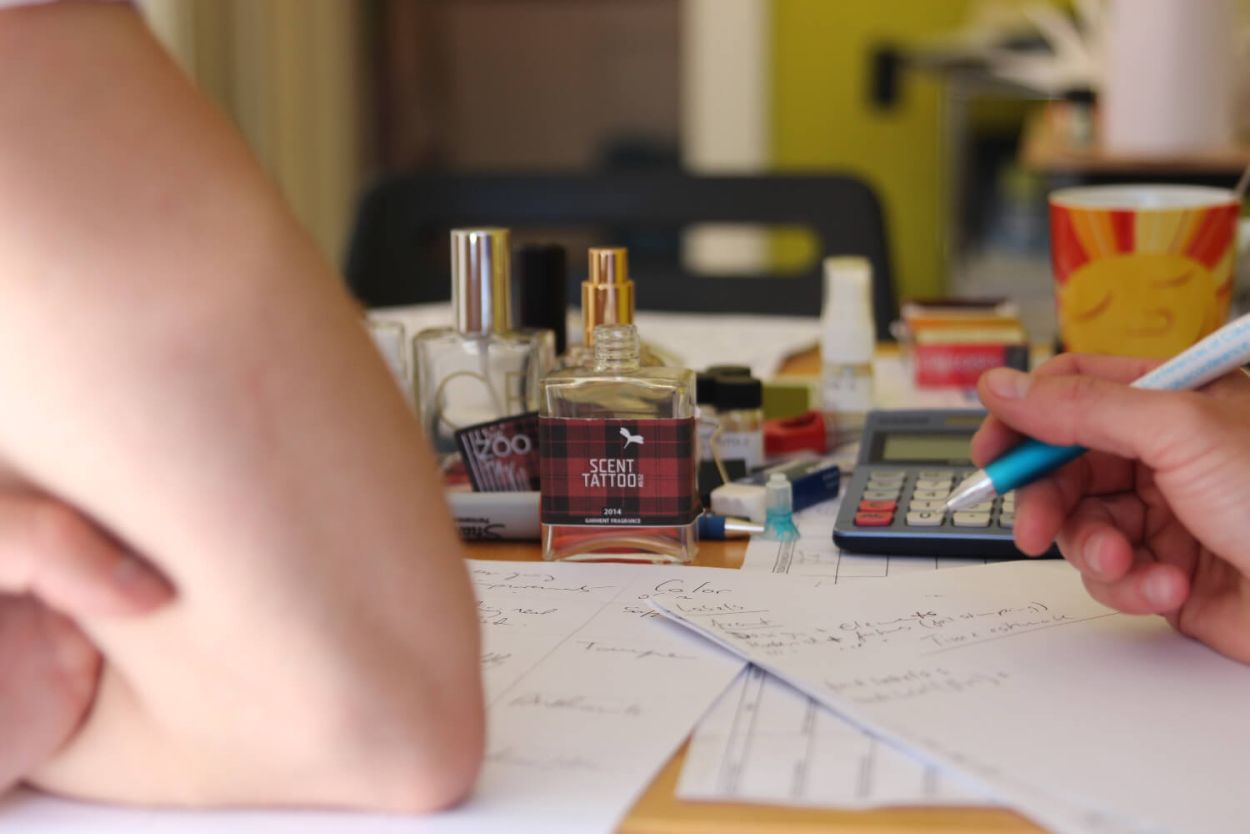
Courtesy of scentculture.tube
Scent tattoo by THE ZOO in the making. Later this perfume won the 5th Art and Olfaction Awards.
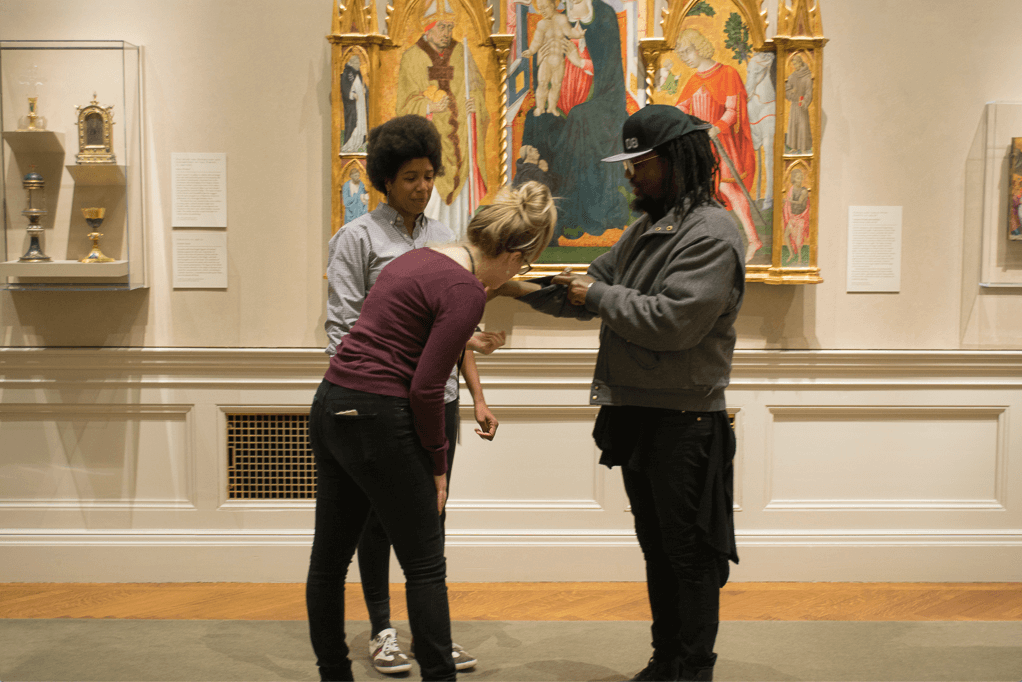
Courtesy: Brian Goeltzenleuchter: Patron Demographic Profile 2016.
Visitors experiencing Sillage, an olfactory artwork by Brian Goeltzenleuchter, at the Walters Art Museum, Baltimore.
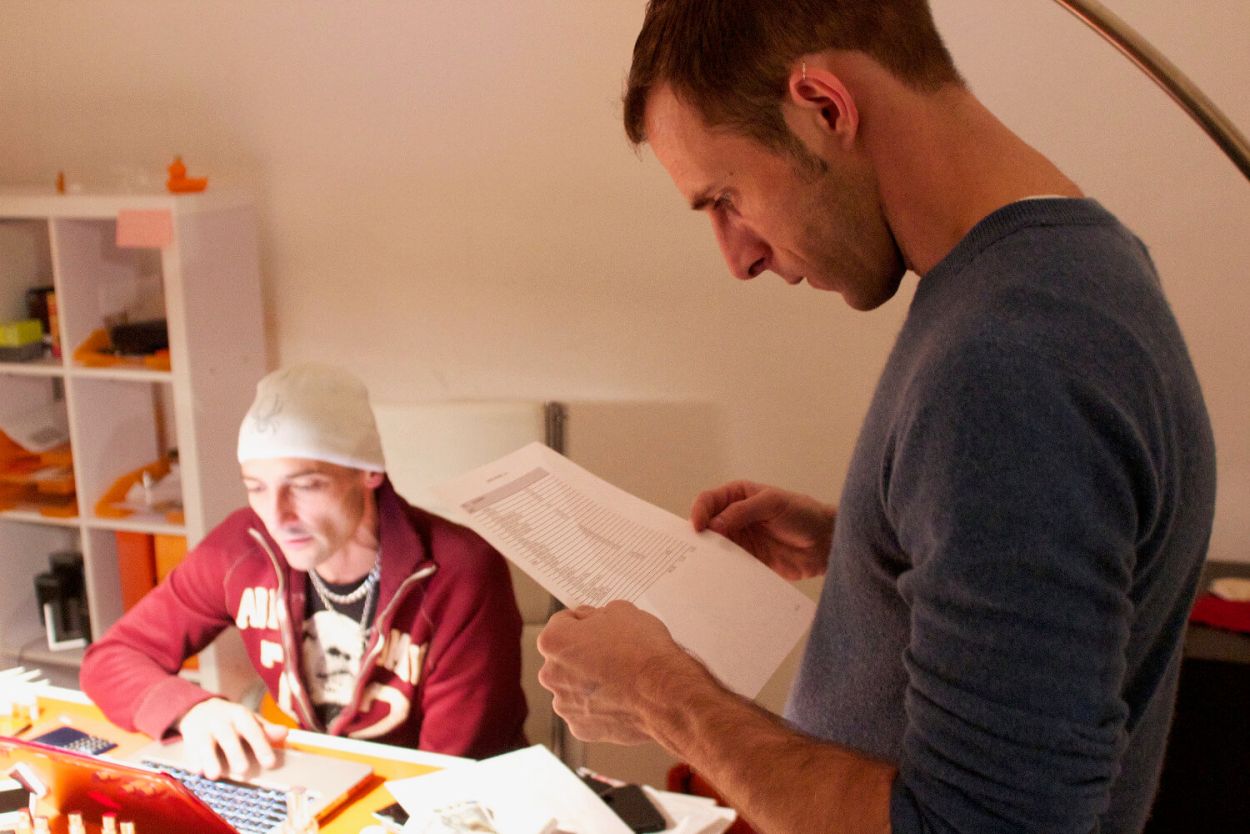
Courtesy of scentculture.tube
Christophe Hornetz discussing a formula with Christophe Laudamiel at Dreamair in Berlin.
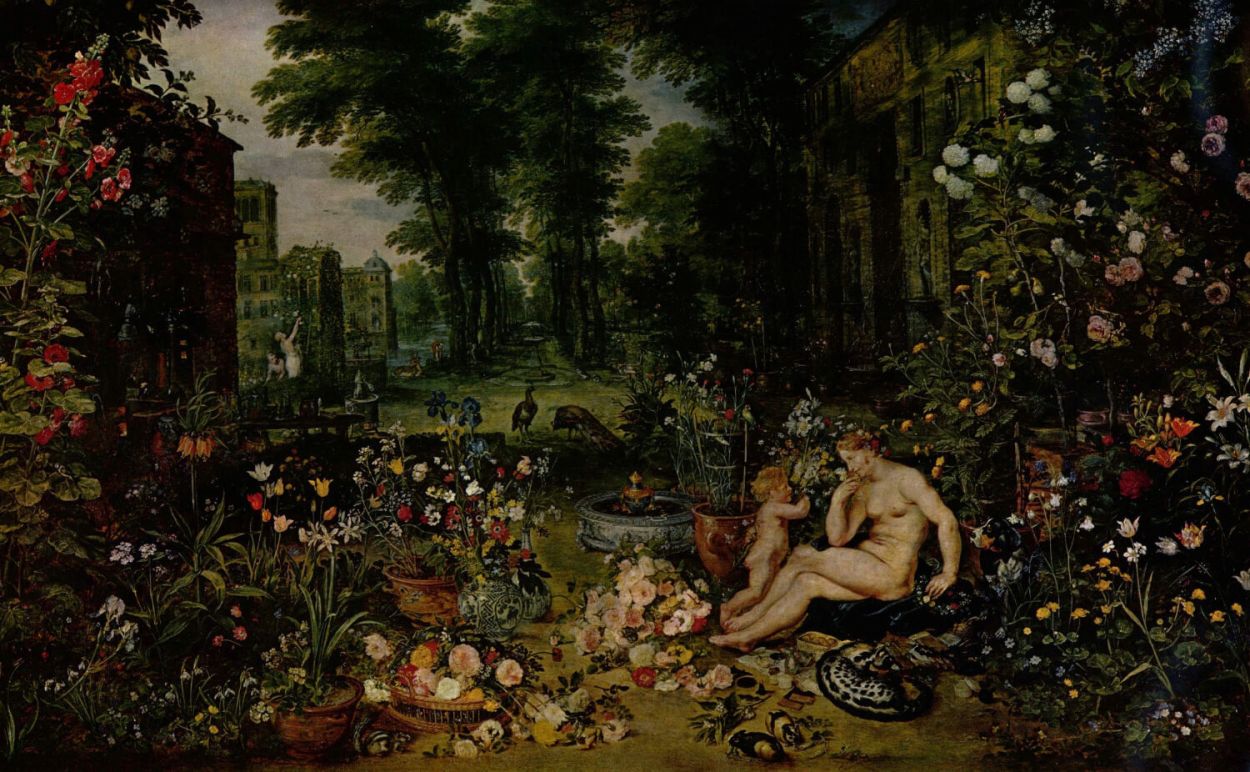
Wikimedia Commons, PD-Art (Yorck Project), CC-PD-Mark, PD-Art (PD-old-70)
Allegorie van de geur by Jan Brueghel the Elder and Peter Paul Rubens.
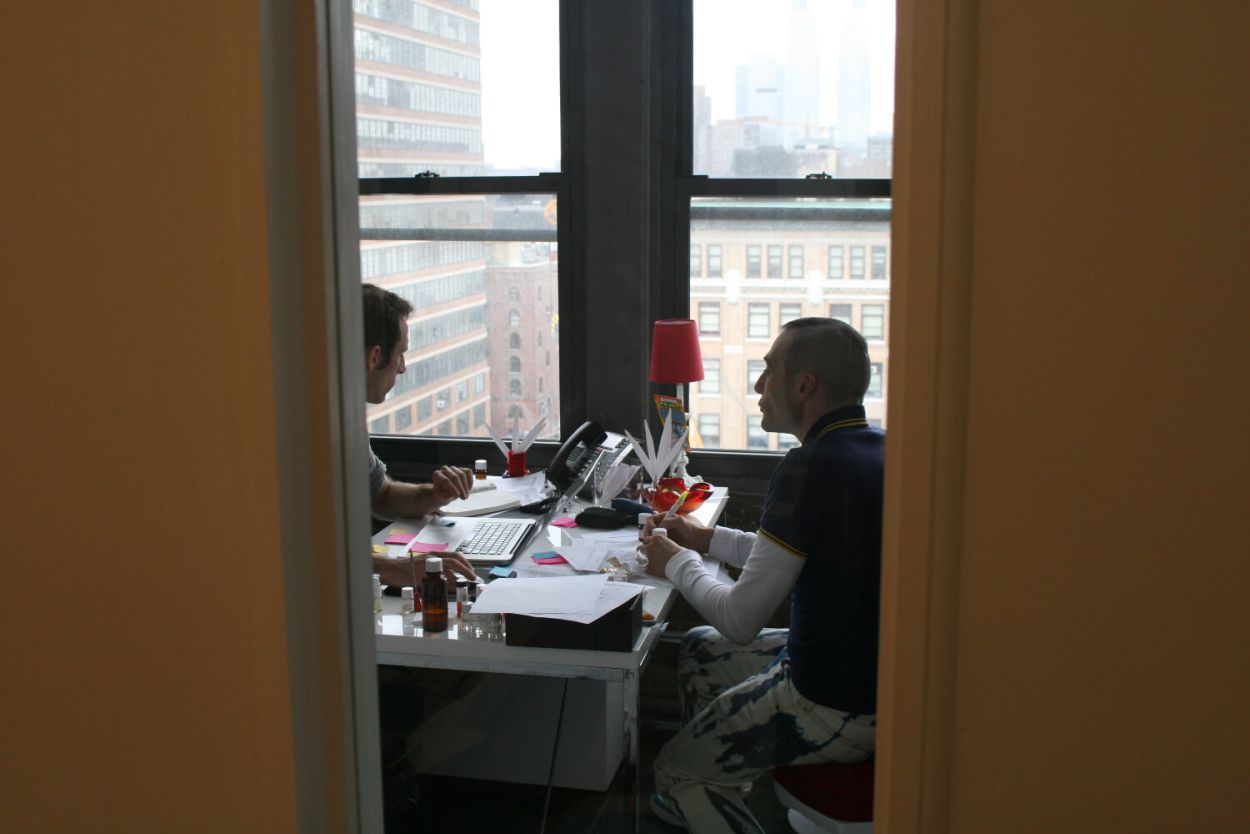
Courtesy of scentculture.tube
Christoph Hornetz & Christophe Laudamiel discussing at Dreamair, New York.
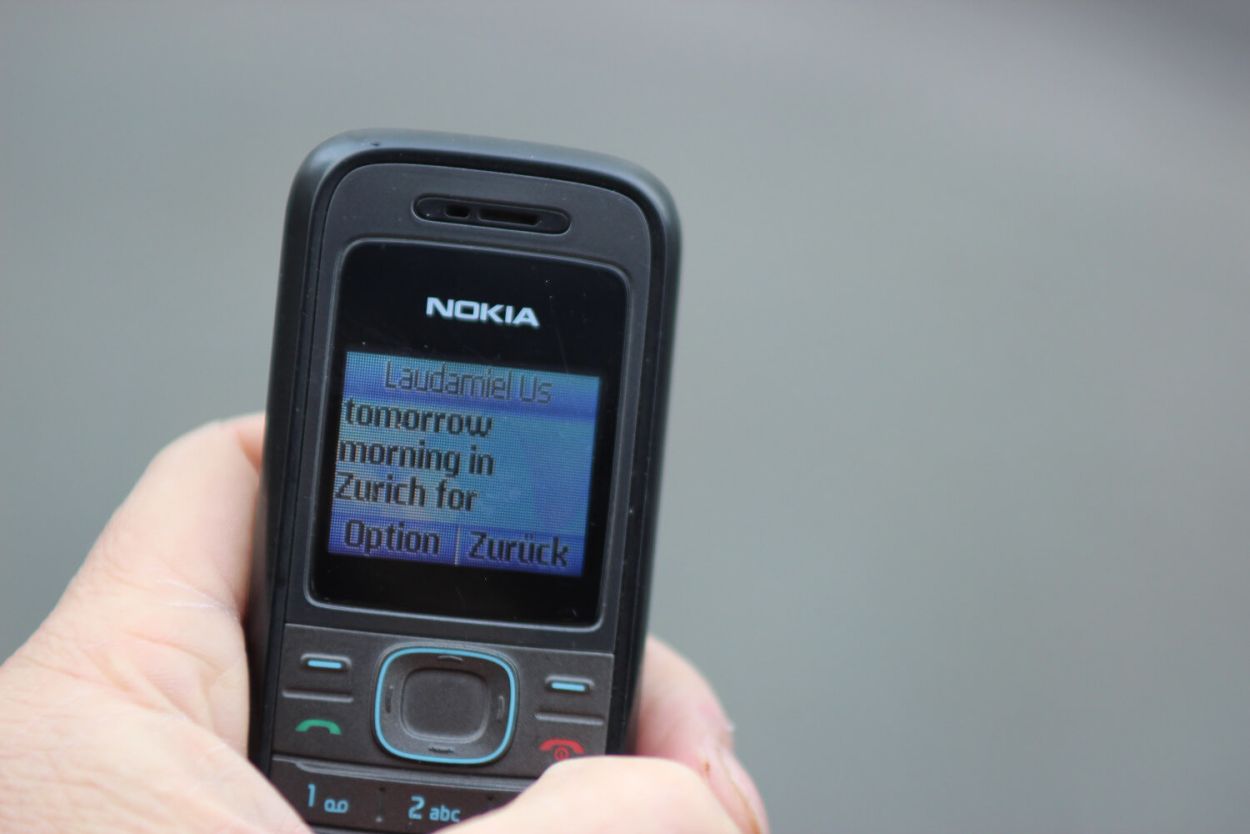
Courtesy of scentculture.tube
Communicating in the field: SMS on Claus’ mobile phone.
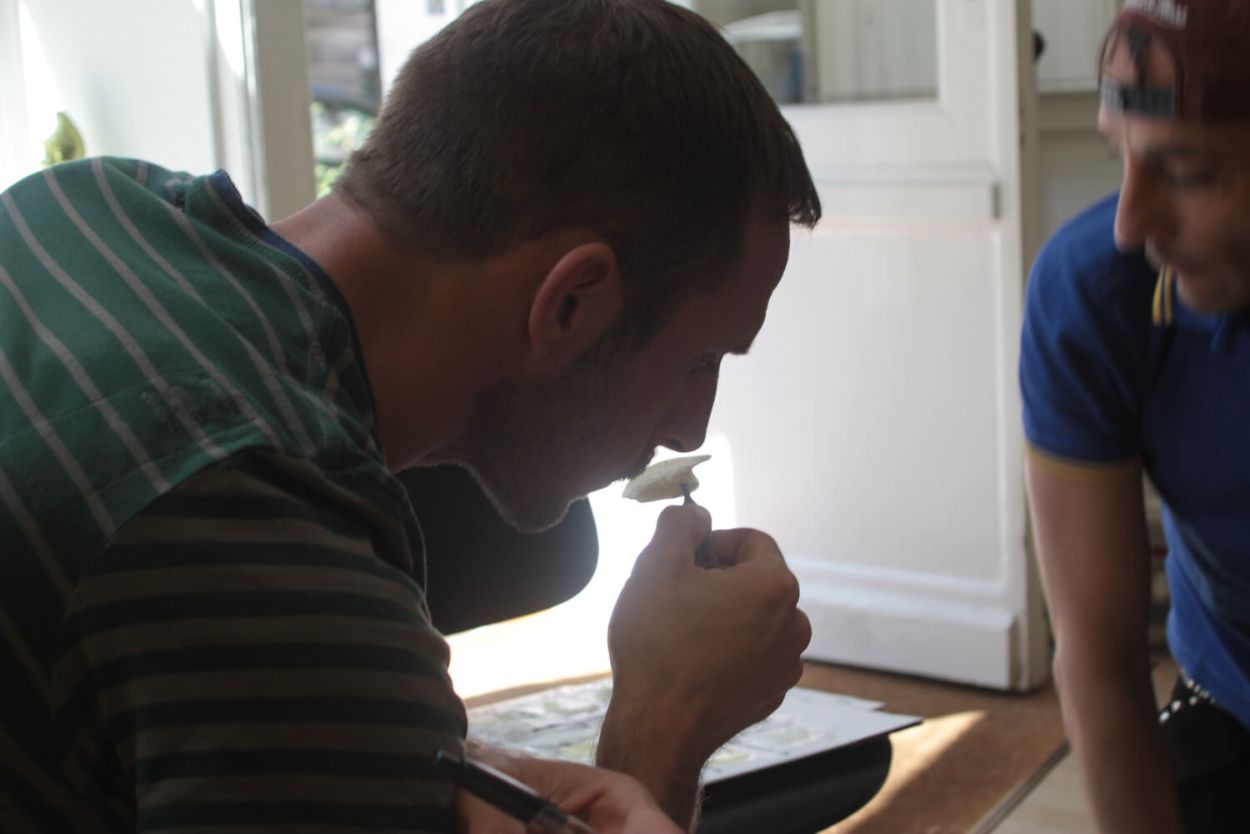
Courtesy of scentculture.tube
Christoph Hornetz evaluating different resins as a material base. The resins are later used when trying to smell pepper.
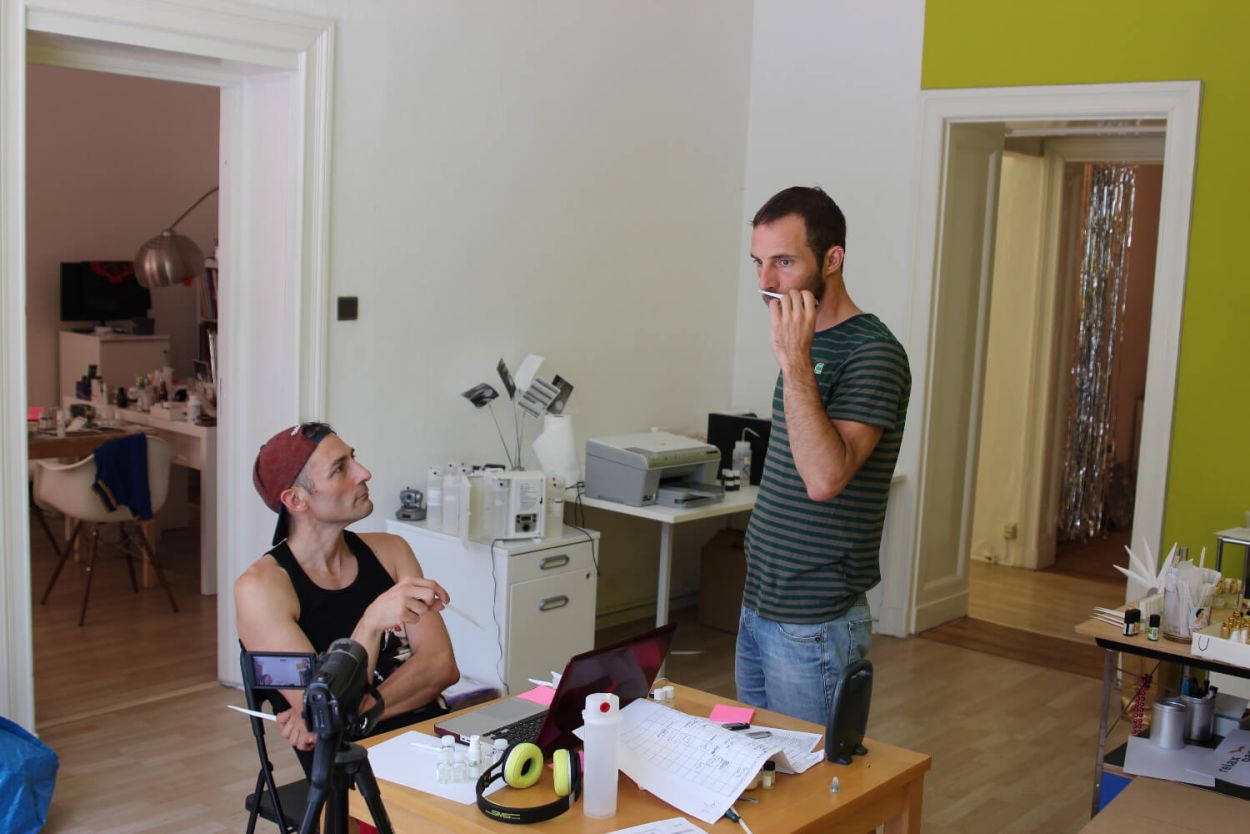
Courtesy of scentculture.tube
Christophe Laudamiel seeking another nose.
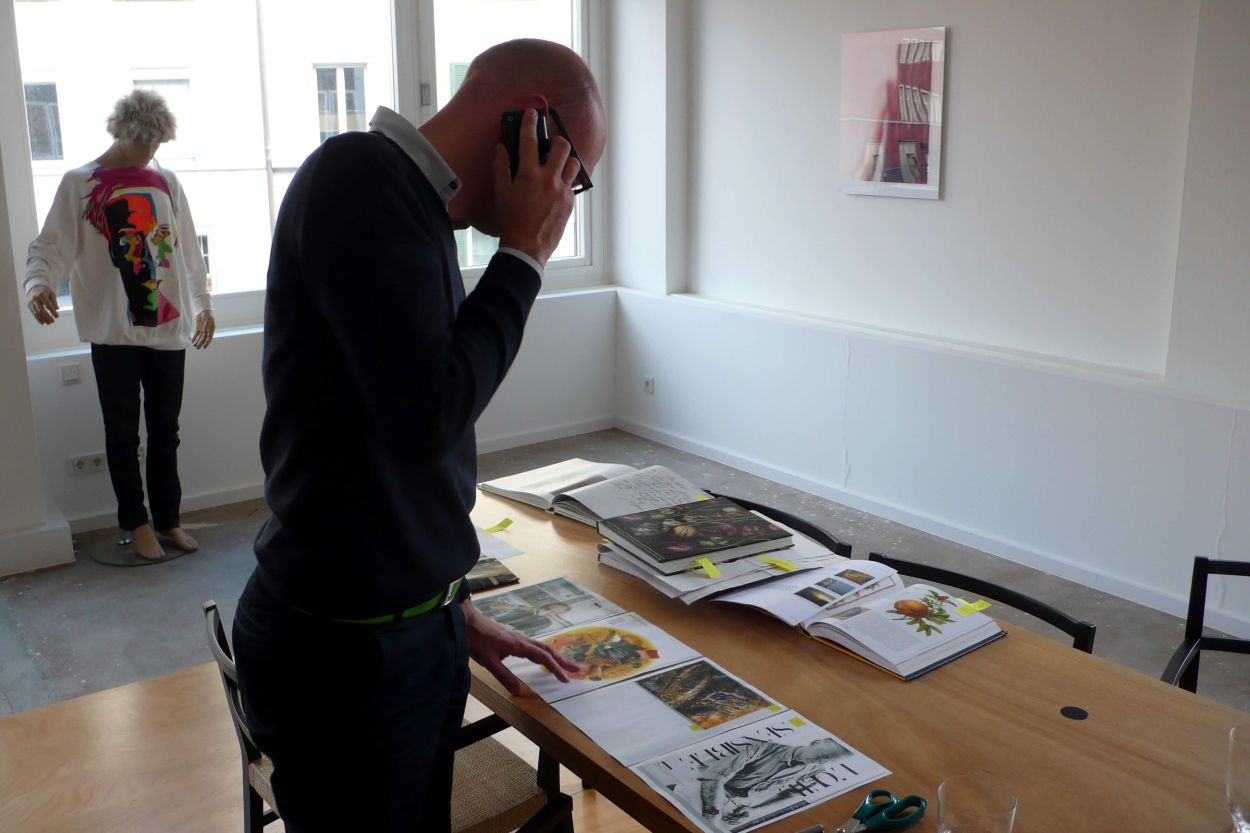
Courtesy of scentculture.tube
Sebastian Fischenich, the creative director of Humiecki & Graef, working on a new scent project.
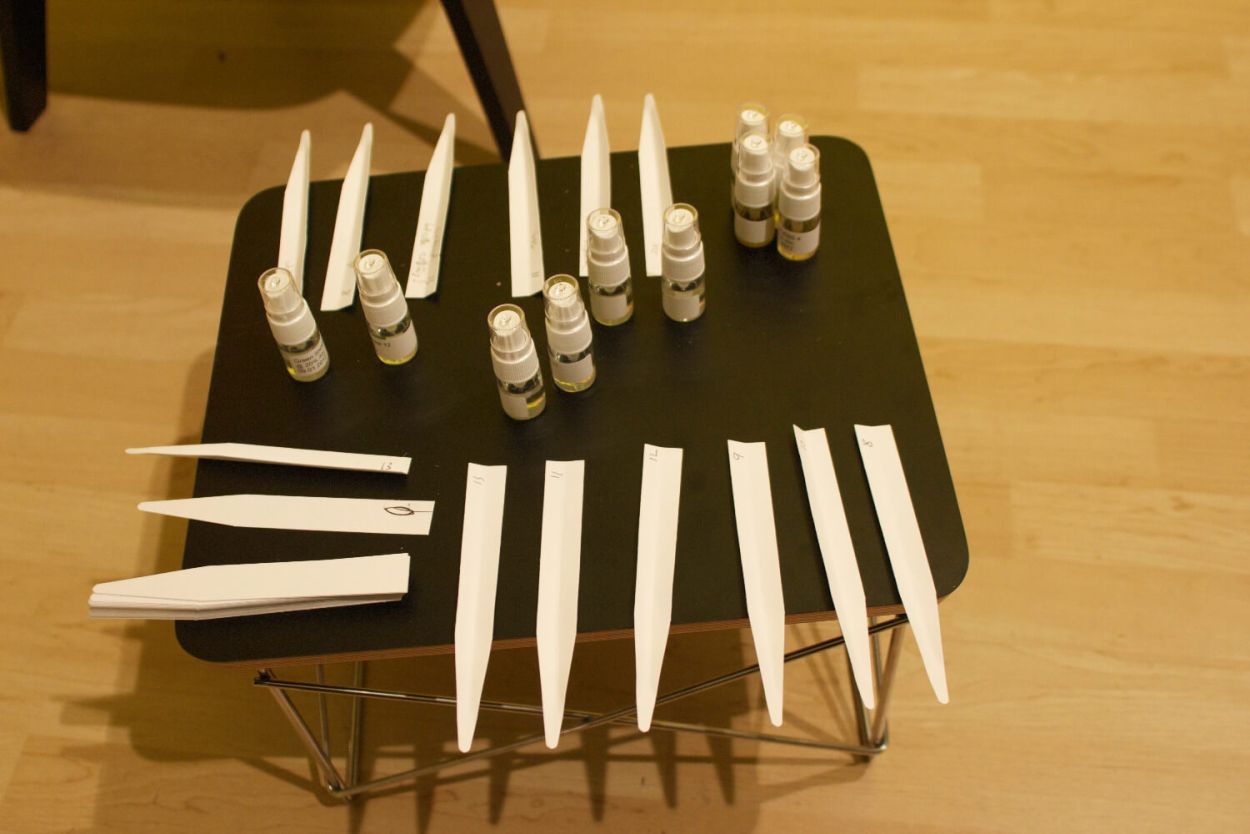
Courtesy of scentculture.tube
Two sets of blotters.
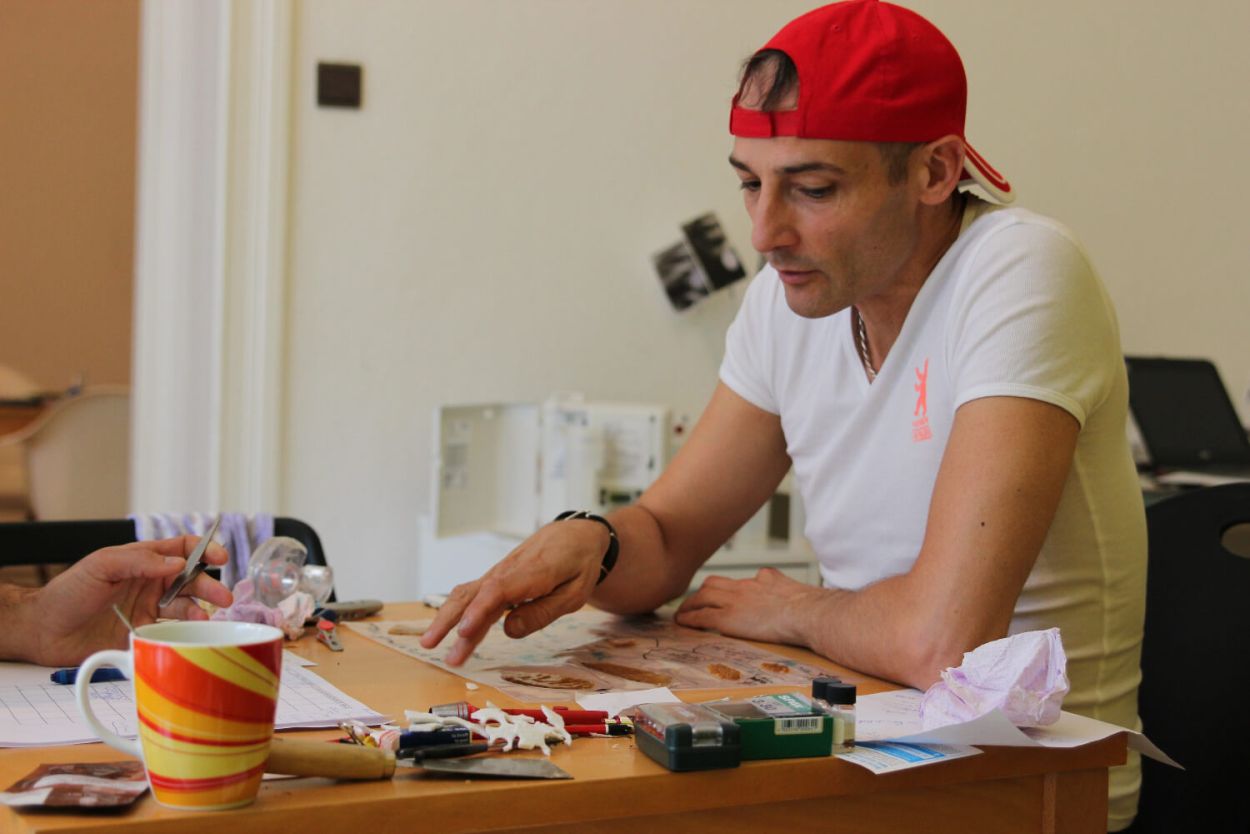
Courtesy of scentculture.tube
Christophe Laudamiel evaluating different resins.
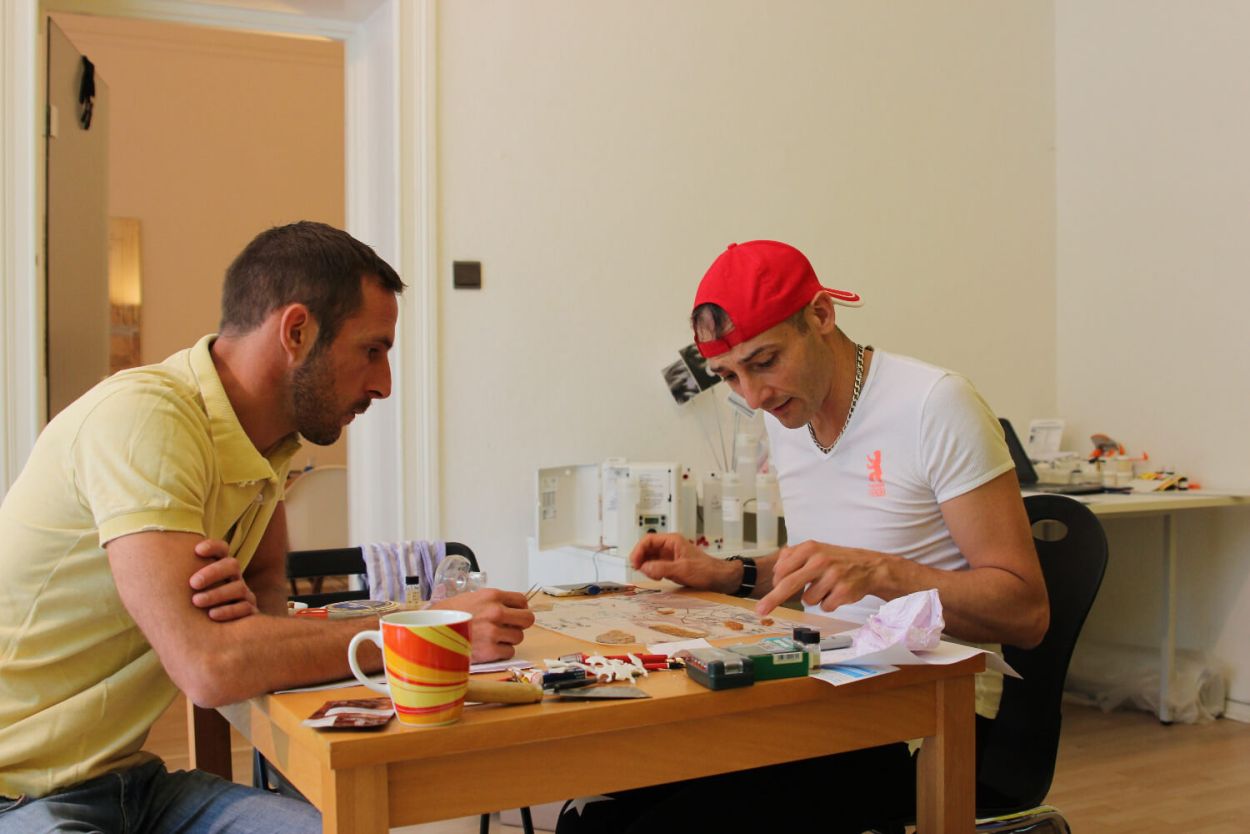
Courtesy of scentculture.tube
Christoph Hornetz & Christophe Laudamiel evaluating combinations of different scents and different resins.
All Tags
- Affect
- Ambience
- Ambiguity
- Analogy
- Analyzing
- Artifact
- Associating
- Beyond words
- Briefing
- Christophe Laudamiel
- Classifying
- Consuming
- Creating
- Culture
- Deciding
- Desk work
- Embodiment
- Ephemeral
- Ethnography
- Evaluating
- Experimenting
- Hemingway
- Humiecki & Graef
- Industry
- Ingredient
- Labelling
- Laboratory
- Metal
- Modifications
- Mundane work
- Orange Flower
- Paper
- Presenting
- Sense-making
- Shalimar
- Smelling
- Storytelling
- Still life
- Strangelove NYC
- Translating
- Visual
- we are all children
- Words
